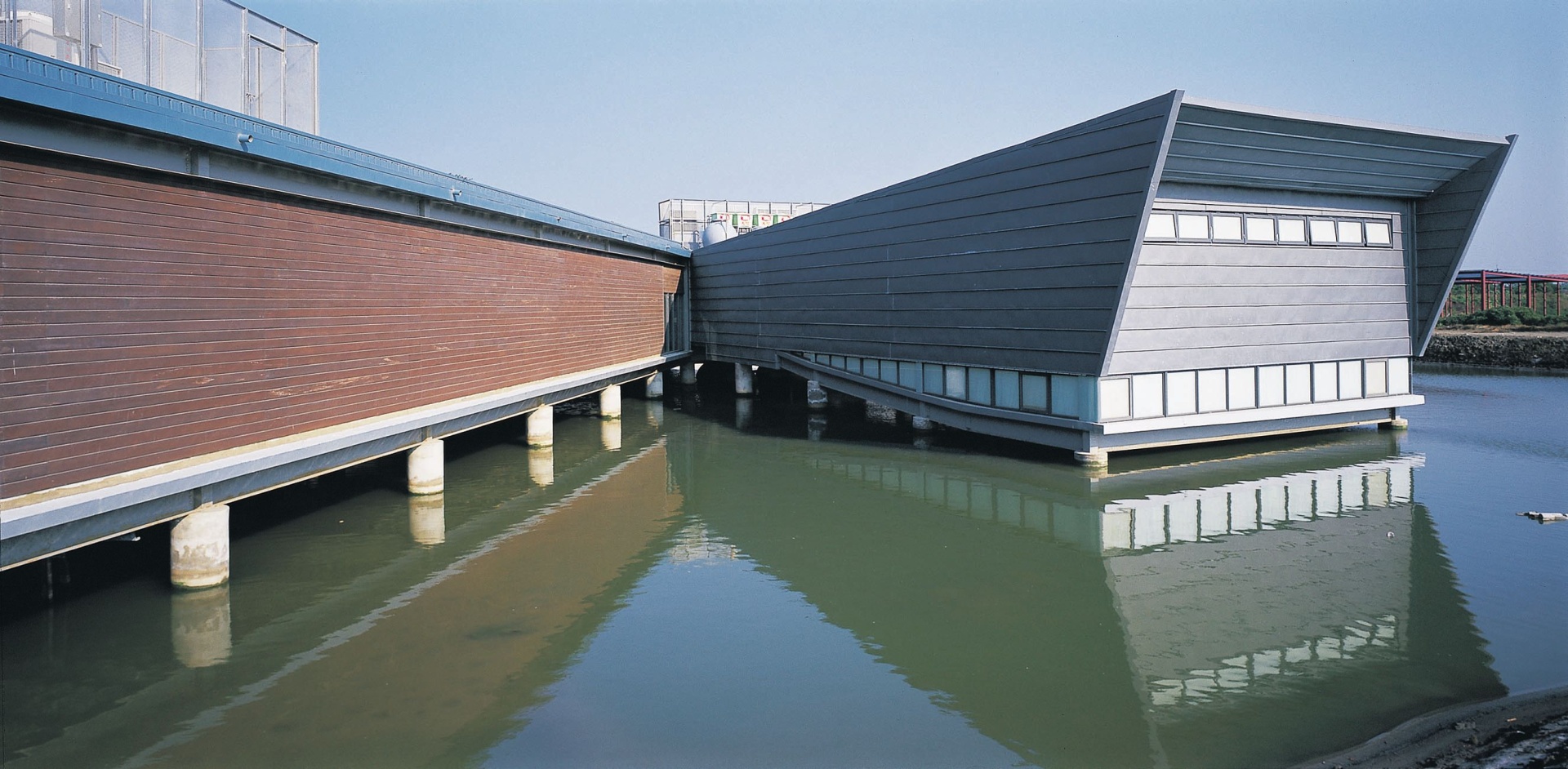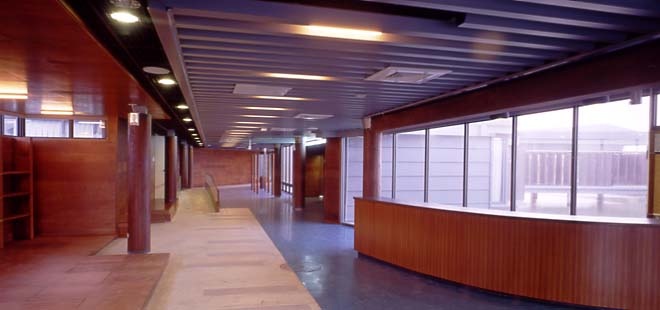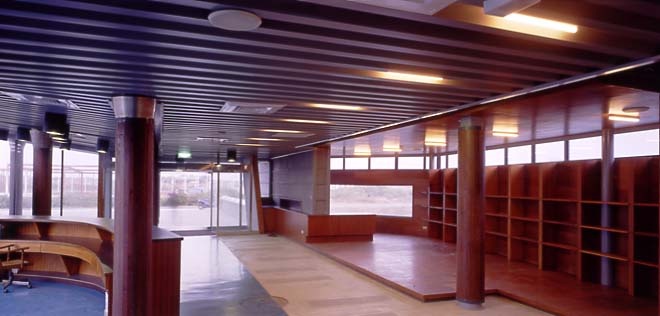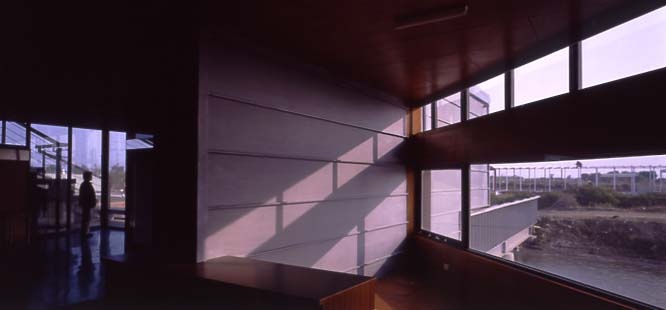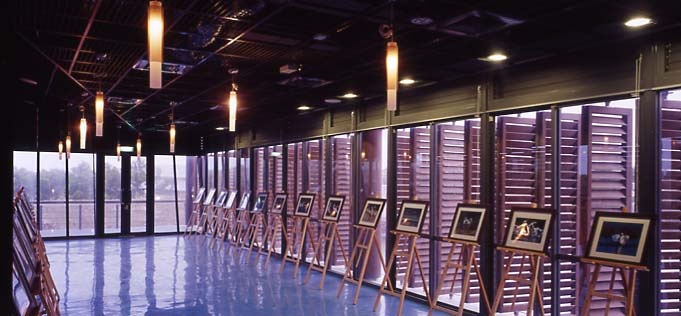
Tainan Black-faced Spoonbill Exhibition Center
The site is located at the mouth of the Zengwen River, in the center of a wetland between the ocean and the land, surrounded by vast fish ponds and the horizon. The Black-faced Spoonbill is a rare and precious migratory bird that breeds in North Korea and Northeast China, flying to Northern Vietnam, Southern China, and Taiwan during the winter. It is estimated that over 60% of the Black-faced Spoonbill population spends their winters in the Qigu area of Taiwan, making it the largest gathering place for these birds. The area has been designated as a 707-hectare important habitat for wildlife and a 300-hectare Black-faced Spoonbill conservation area. The plan includes the establishment of a Black-faced Spoonbill Conservation and Research Center, aiming to integrate the efforts of local communities and the government to preserve and manage the precious ecological resources, while promoting ecological education and environmental conservation awareness.
Design Concept - "Touching the Earth Lightly"
The design concept revolves around humbly and subtly integrating with the environment. Emphasizing horizontal lines in the architectural expression to minimize visual impact on the surroundings. Considering ecological considerations and budget constraints, low-tech solutions are adopted to reduce energy consumption. Materials such as wood and titanium zinc metal panels are chosen for their low heat capacity and reflectivity. Rooftops are covered with soil and planted with vegetation to improve air conditioning efficiency. Grilles, sunshades, and corridors are extensively used for shading and ventilation purposes.
Encouraging Biodiversity
The site is adjacent to a wildlife conservation area, and the wetland environment is rich in ecological resources and value. The buildings are constructed on existing fish ponds using pile foundations and lightweight structures, allowing water bodies to be preserved to support wetland biodiversity while regulating indoor temperatures. The rooftop platform serves as an extension of the ground, providing birdwatchers with higher and wider visibility. The greenery and vegetation on the roof act as camouflage for the birds, demonstrating respect for the ecology.
Dialogue with Nature and Landscape
The center primarily serves as an educational display for birdwatchers, while the research center is dedicated to wetland environment research and ecological conservation. The design responds to the spatial needs by separating the conservation and management center from the research center, avoiding overwhelming visual impact. The horizontal volumes harmonize with the surrounding horizontal lines, and the scattered volumes shape appropriate outdoor spaces, creating more layers and connections between indoor and outdoor spaces, architecture, nature, and landscape.
Embraced by Nature and Environment
The architectural volumes extend outward, creating horizontal lines and spatial layers, providing excellent environmental conditions for the indoor spaces. Each space has a significant area of water and is in contact with the surrounding landscape, inviting people to naturally gravitate outdoors, embrace nature, and cherish it.
Design Concept - "Touching the Earth Lightly"
The design concept revolves around humbly and subtly integrating with the environment. Emphasizing horizontal lines in the architectural expression to minimize visual impact on the surroundings. Considering ecological considerations and budget constraints, low-tech solutions are adopted to reduce energy consumption. Materials such as wood and titanium zinc metal panels are chosen for their low heat capacity and reflectivity. Rooftops are covered with soil and planted with vegetation to improve air conditioning efficiency. Grilles, sunshades, and corridors are extensively used for shading and ventilation purposes.
Encouraging Biodiversity
The site is adjacent to a wildlife conservation area, and the wetland environment is rich in ecological resources and value. The buildings are constructed on existing fish ponds using pile foundations and lightweight structures, allowing water bodies to be preserved to support wetland biodiversity while regulating indoor temperatures. The rooftop platform serves as an extension of the ground, providing birdwatchers with higher and wider visibility. The greenery and vegetation on the roof act as camouflage for the birds, demonstrating respect for the ecology.
Dialogue with Nature and Landscape
The center primarily serves as an educational display for birdwatchers, while the research center is dedicated to wetland environment research and ecological conservation. The design responds to the spatial needs by separating the conservation and management center from the research center, avoiding overwhelming visual impact. The horizontal volumes harmonize with the surrounding horizontal lines, and the scattered volumes shape appropriate outdoor spaces, creating more layers and connections between indoor and outdoor spaces, architecture, nature, and landscape.
Embraced by Nature and Environment
The architectural volumes extend outward, creating horizontal lines and spatial layers, providing excellent environmental conditions for the indoor spaces. Each space has a significant area of water and is in contact with the surrounding landscape, inviting people to naturally gravitate outdoors, embrace nature, and cherish it.
| Awards |
|
|---|---|
| Category | Public |
| Location | Tainan |
| Completion | 2004 |
01 / 10

